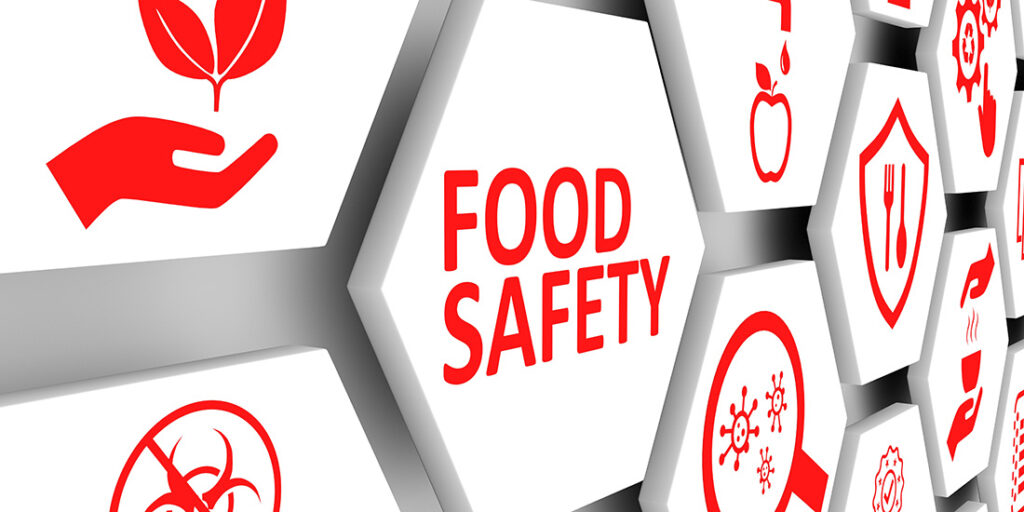TERRORISM

A Holistic Strategy for Responders’ Well-Being
- Camilo Olivieri
First responders and emergency managers face constant, high-pressure stress from trauma, long hours, and critical decisions. This often leads to chronic stress, increasing risks of heart disease, mental health issues, and substance abuse. Their ability to help others depends on prioritizing their own well-being through proactive self-care.
Most Recent

The Societal and Economic Dangers of Agroterrorism
Michael (Mike) Nicholls
March 12, 2025
While Ireland’s potato blight was destructive to the Irish population, modern agroterror attacks could be designed to hurt a nation’s economy rather than to kill its people. However, positively identifying agroterrorists would be a formidable task.

Cost Analysis: Protecting the Grid and Electronics from an EMP
The Foundation for Infrastructure Resilience
March 12, 2025
Because modern societies are increasingly reliant on electronics, they are more vulnerable to the effects of an electromagnetic pulse event. As nations move to electrify their critical infrastructure and essential services, the cascading effects of a power grid disruption increase their vulnerability.

The Human Factor in Cybersecurity Events: Critical Education Components
Dan Scherr and Tanya M. Scherr
March 5, 2025
When considering cyberattack risk, understanding the primacy of the human factor is central in developing plans for continuity of operations and incident response. With the increasing cost of data breaches, it is increasingly important to educate users on best practices and to employ robust security programs.

Imagining the U.S. Without Power: A Dual-World EMP Exercise
Charles (Chuck) L. Manto, K. Luke Reiner and Dave Hunt
February 12, 2025
A dual-world tabletop exercise simulating an electromagnetic pulse event in Chicopee, Massachusetts, revealed startling discrepancies in outcomes between the city’s current preparedness and a moderate-preparedness simulation.
TERRORISM Archives
Malicious and Non-Malicious Cyber Incidents: Education and Preparation
Dan Scherr and Tanya M. Scherr
October 9, 2024
Working with stakeholders across an organization to ensure cyber resilience is a part of disaster planning. Education is critical. Helping users understand hackers’ strategies to
Tren de Aragua: From Prison Gang to Transnational Organized Crime Syndicate in the U.S.
Anthony (Tony) Mottola and Dan Scherr
October 2, 2024
The United States has never been shielded from transnational organized crime syndicates or transnational street gangs operating in its borders. But these days, extensive and
Securing Cities: The Fight Against Local Level Cyberthreats
Michael Breslin
October 2, 2024
As digital threats against local governments and private entities grow more sophisticated, the need for action becomes urgent. Cybersecurity is a shared responsibility, and at
Thwarting Terrorist Threats at Home
Richard Schoeberl
September 25, 2024
Although the U.S. has not experienced another terrorist attack like the one on September 11, 2001 (9/11), the threat remains. In fact, the Federal Bureau
National Laboratory Partnerships: Linking Operations and Research
Ryan Eddy and Ann Lesperance
September 25, 2024
The September 11 terrorist attacks in 2001 spurred a pivotal change in the way the U.S. approaches preparedness for threats to the homeland. In recognition
Vulnerability and Exploitation: Human Trafficking After Natural Disasters
Benjamin Thomas Greer and Nathan DiPillo
August 28, 2024
Disasters inherently come with known and unknown threats. One looming emerging threat is human trafficking because traffickers capitalize on the vulnerability these events create to
Follow Us
Get Instant Access
Subscribe today to Domestic Preparedness and get real-world insights for safer communities.
TERRORISM
Most Recent

The Vulnerability of Public Figures: Lessons from UnitedHealthcare
Kole (KC) Campbell
February 5, 2025
High-profile business leaders like UnitedHealthcare’s murdered CEO have been at an elevated risk of targeted violence in the past several

Protecting Critical Infrastructure From Weaponized Drones
David Winks, Steve Chill, Frederick Ferrer, Michael J. "Apollo" Lovell, Mike Swearingen and Mary Lasky
December 4, 2024
Electricity substations are traditionally only protected by chain link fences and signage warning of the dangers of high voltage. However,

Growing Foreign Threats to National Security, Part 2: Emergency Management Approaches and Choices
Glen Woodbury
October 30, 2024
This is Part 2 of a two-part article that explores the nation-state threat and its implications for the emergency management

Growing Foreign Threats to National Security, Part 1: Challenges and Considerations
Glen Woodbury
October 23, 2024
Part 1 of a two-part series explores the nation-state threat and its implications for the emergency management community, regarding the
TERRORISM Archives
The Missing Plague Vials
Robert C. Hutchinson
April 17, 2024
A true story of missing bubonic plague vials, an airport bomb threat, and other suspicious activities again demonstrate continued national and homeland security vulnerabilities and
Interoperability During Mass Casualty Incidents
Charles J. Guddemi and Catherine L. Feinman
April 3, 2024
During a mass casualty incident, response agencies must be able to communicate in real-time. This means that interoperability plans need to include everyone involved in
The Evolution of Homeland Security Higher Education
Heather Issvoran
March 27, 2024
After the terrorist attacks on September 11, 2001, homeland security education expanded to ensure that local, state, tribal, territorial, and federal agencies had the tools
Protecting Infrastructure – Cyber, Physical, and EMP Attacks
David Winks
February 21, 2024
Imagine 3,500 spiders, each with their own style, getting together to create a giant web. That’s how this author describes the U.S. power grid and
Repeated Intelligence Failures – Not Connecting the Dots
Robert Leverone and Darren E. Price
February 14, 2024
Gathering intelligence about potential threats is a daunting task that many agencies perform. When agencies do not effectively share intelligence, they may miss connecting the
The [Evil] Empire Strikes Back: National Security Emergencies
Robert J. (Bob) Roller
February 7, 2024
After the Cold War fears of the 1980s ended, attention shifted from nation-state threats to terrorism and large-scale natural hazards. However, a federal emergency planner
Follow Us
Get Instant Access
Subscribe today to Domestic Preparedness and get real-world insights for safer communities.


